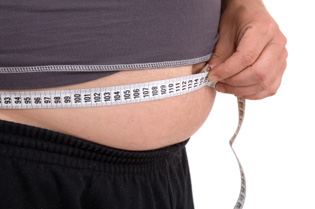The beginning of January is often considered the season of weight loss due to the many individuals who choose to embark on this type of mission as soon as the new year begins. In fact, fighting the battle of the bulge is one of the most common new year’s resolutions set year after year. And although it sounds like a good idea at the time, very few people actually follow through with this sort of resolution. In fact, a third of individuals will give up on their lofty weight loss dreams by the end of the first month.
This year, instead of focusing on becoming thin, why not focus on improving your health and shrinking your waist instead. Although it may seem weird to focus on the size of your waist this year, it’s often considered a better indicator of health and it’s quite common for individuals to achieve an appropriate waist size before they notice numbers changing on the scale.
The fat that collects around your middle can often lead to high blood pressure, high cholesterol, cardiovascular disease, stroke, and type 2 diabetes if too much is present. Although you can’t specifically target this area of your body and only lose weight here, individuals often see their abdominal fat stores shrink by 10-30% when they lose as little as 5-10% of their overall body weight. This means that your waist measurements may fall into a healthy range even before you hit your desired weight.
To tighten up your mid-section, you need to eat fewer calories and increase the amount and intensity of your physical activity. By decreasing your overall caloric intake, you will force your body to use up some of its stored fat as energy so it can keep functioning throughout the day. Exercise can also help burn more fat and helps preserve lean muscle.
 Waist circumferences vary by gender and ethnicity. For most men, a desired waist circumference would be no more than 40″ around. For women, 35″ would be appropriate. More recent studies have shown that waist circumferences for individuals of Asian decent are slightly less than this with 35″ being appropriate for Asian men and 31″ being appropriate for Asian women.
Waist circumferences vary by gender and ethnicity. For most men, a desired waist circumference would be no more than 40″ around. For women, 35″ would be appropriate. More recent studies have shown that waist circumferences for individuals of Asian decent are slightly less than this with 35″ being appropriate for Asian men and 31″ being appropriate for Asian women.
To measure your middle, locate the top of the hip bone and place a tape measure evenly around the bare abdomen at the level of the bone. Read the tape measure and record the circumference in inches. For best measurement, ensure that the tape is snug, but doesn’t push tightly into the skin. Make sure you also breath in and out normally – no “sucking in” allowed!
Although achieving a healthy middle does result from the same techniques used for overall weight loss, it is entirely possible to reduce your waist circumference without any noticeable weight changes. Even just a few inches lost can improve your health immensely and by focusing on something other than the numbers on the scale, you may feel a lot more successful once February roles around.
Looking to whittle your waist? Try:
Review: The Nautilus CoreBody Reformer
